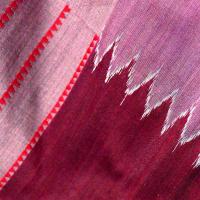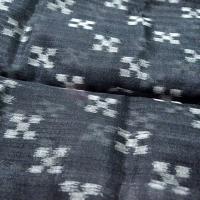Design Gallery
Ikat Textiles of Nuapatna 2
Tie-Resist-Dye and Weaving
by
The word 'ikat' is derived from the Indonesian word 'mengikat' which means 'to tie'. Ikat is actually the intricate process of tie-dye (knotting selections of yarn before dipping them in separate colors one at a time) and finally weaving them to produce one of the most delightful designs in multi-hued tones, in motifs drawn from the richness of nature.
The tradition of Ikat in Orissa is fairly old. Historical records available at the Jagannath temple in Puri dating back to 1719 indicate that verses (shlokas) from the Geeta Govinda and calligraphic forms were woven into cloth donated to the temple. The four basic colors found on Lord Jagannath - black, white, red and yellow - are extensively used in these textiles. Even the motifs - temple border, lotus, conch and wheel - signify the affinity with the reigning deity. The products like sarees, dress materials, stoles, ties and furnishings are manufactured for a great export range.
For more details: http://dsource.in/resource/ikat-textiles-nuapatna























